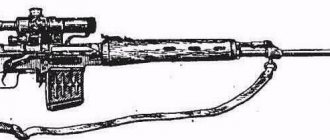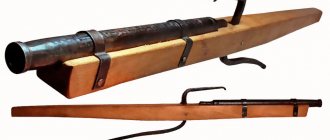If you and your girlfriend want to spice up your sex life and add something “spanking” to it, the alternative may shock you. Today on the market you can find a wide variety of tools with which you can flog your beloved, from the simplest whips, stacks to whips. Which of these hits the hardest? We'll find out in the article.
Necessary item
The explanatory dictionary of the Russian language by S. I. Ozhegov contains the following definition: “A whip is tightly intertwined ropes or belts attached to a handle, used to spur animals, in the old days for corporal punishment.”
It is noteworthy that only in 1863 lashing was abolished by Emperor Alexander II Nikolaevich, again not for everyone. Exiles, convicts, and inmates of military prisons continued to be whipped for various offenses until the fall of the monarchy.
Originally conceived as a tool for shepherds and cattle drivers, the whip turned out to be a sought-after tool in the hands of executioners, prison guards and servants of the law. “Domostroy” advised a man to “teach” his wife with the help of a whip, because this instrument of punishment causes less harm to a woman’s health than an iron stick or, for example, a whip.
We analyze a simple step-by-step method of a single puzzle
Cut a long strip of leather and cut longitudinal stripes into it. The ends should remain intact. You will end up with a strip of leather cut into three cords.
Secure one end of the strip to your work area. Pull the lower end towards you, and then pass it between the 2nd and 3rd stripes - this will make weaving easier. On top of the braid, place the first cord on the second, and then thread it between the second and third. Throw cord 3 through the first, the second through the third. Finally, pull the end of the braid towards you again and pass it between laces 2 and 3.
Repeat these steps, following the pattern, until you finish weaving. At the end, make a loop again by threading a strip between the cords.
To make women's bracelets, add various beads, rhinestones and other details to the weave.
Family violence
Doctor of Philological Sciences Andrei Yastrebov in his book “God Save the Russians!” (2011) noted that in Rus', beatings inflicted on a wife by a husband were considered a normal, everyday thing. This is evidenced by the wedding ritual, when the groom received a whip as a gift from the bride’s father, which served as a symbol of the man’s power over the woman. The newlywed usually hid the instrument of obedience in his boot or tucked it behind his sash.
“Especially for the edification of my wife, there was a whip hanging on the wall, which was called “fool.” Often the head of the family would pull his wife by the hair, strip her naked, and beat her with a “fool” until she bled—this was called “teaching his wife.” Sometimes rods were used instead of a whip, and the wife was flogged like a small child. And sometimes they beat me with a club. “Anything could happen,” wrote A.L. Yastrebov.
During the time of Domostroy, domestic violence was perceived as a moral obligation of the owner of the house. Some foreigners who visited Rus' in the 14th-16th centuries emphasized that local women, due to their character, could not imagine family life without regular beatings, which served as proof of their husband’s love. At least, similar passages are found in the works of the Austrian diplomat Sigismund von Herberstein (1486-1566) and some other travelers.
Probably, foreigners drew similar conclusions from the stories of their Russian drinking companions, as well as from proverbs translated by them such as: “He beats - it means he loves”, “Love your wife like your soul, shake her like a pear” and “The more you hit your wife, the more The cabbage soup tastes better.”
Description of whips and whips
Every person has some preferences and wishes in sex. Some men, for example, like the use of prostate massagers, like the one on the page https://aaaa.in.ua/igrushki/analnye-igrushki/massazhery-prostaty/, so they use them. Some people prefer BDSM, so different types of whips in their arsenal will definitely be useful to them. Features of different whips:
- whips with down or feathers for tickling - they make it possible to excite a partner with light tickling movements, and if you use them skillfully and alternate techniques, even bring you to orgasm;
- spanking shoes - this toy is shaped somewhat like a palm, so it is convenient to spank with it; role-playing games with its participation will definitely become more intense;
- whips - short branches come out of the whip, which can be used to lightly whip, or can seriously harm, but for those who love hard BDSM - this is it;
- standard lashes - with a large number of longer branches, suitable for almost everyone.
Other materials
The most common cell material was leather. Moreover, sometimes pieces of iron or thin wire were woven between the rawhide straps to increase the force of the blow.
The most famous type of such a weapon is the Cossack whip, which in battle turned into a real weapon. An experienced warrior was capable of literally knocking his opponent out of the saddle with a whip. Sometimes a small metal weight was attached to the end of the whip, giving it some resemblance to a flail.
Another material used to make whips is hemp. In other words, coarse bast fiber obtained from hemp stems. Due to the high strength of this material in Rus', ropes, ropes and more were often made from it. Village shepherds wove homemade whips from hemp, since it was cheap and was always at hand.
Another version of a similar whip for corporal punishment was the so-called cat-o-o-nine-tails, which received its nickname due to the fact that it left parallel marks on the victim’s skin, reminiscent of cat scratches. The three-tailed “cat” in Rus' sometimes replaced the whip.
If leather whips were used to punish crimes, motivate horses and urge cattle, then hemp nine-tails were used to instruct sailors in the navy: there hemp ropes were more common than leather.
Such tools were hardly used to “raise a wife,” since they could easily cripple a woman, which was severely punished according to the same “Domostroy.” In the end, this book was not a “tool of oppression,” but a set of instructions for family life, with its own concept of justice, albeit quite peculiar, but natural for that time.
Learning to weave from genuine leather: the circular braiding method
Any four-cord weaving technique, including this one, causes the skin to shrink. For this reason, it is better to cut the laces slightly longer than necessary. As for thickness, it is recommended to use a thin cord for circular weaving, because the product will be more voluminous.
Cut four cords and tie their ends together. For convenience, let's denote them as A, B, C and D, starting from the left and ending on the right. Secure the workpiece on a paper holder, or by gluing it to the table with tape.
To avoid confusion, for the first time it is better to weave from multi-colored laces, or mark each one by tying a colored thread to it.
Making a voluminous bracelet with your own hands
Start with lace D. Bring it to the left over B and C, so that the order changes to A, D, B, C. Then move B to the left, behind D, to make A, B, D, C. Throw the A-cord over to the right through B and D, then intertwine with cord D. If done correctly, ends D and A will be in the center, B will be on the left, and C will be on the right.
Take B and A in your left hand, and D and C in your right. Pull them in different directions to tighten the weave. Pass cord C over D and A, then move A to the left through C. Move cord B to the right through A and C, and C, in turn, through B. Tighten the weave again, spreading the pairs of laces apart.
Repeat all steps several times until you obtain the desired length of the product. When finishing the work, tie the ends of the laces. To connect braided strands into a bracelet, special fittings, for example, an end clamp or ready-made clasps, are ideal.
We are engaged in weaving a leather whip in a simple MK
To weave a whip yourself, you first have to cut the leather to make the first knee (the one below). It is better to weave it from thin strips 5-7 mm wide. The knee may consist of 5 or more stripes. It is advisable to use long and straight stripes.
Before you start cutting, mark a piece of rawhide, marking a strip equal in width to all the strips, and step back 5-10 mm from the end for fastening.
The lower knee is woven like this: spread the strips to the sides and weave them alternately, weaving the strips on the right and then on the left. Make sure the pattern is symmetrical. The knee should gradually thicken. To do this, add a liner of rawhide or similar material to the middle of the weaving. About 5 cm before the end, stop increasing the weaving diameter and weave another 8 cm without the liner.
The next parts of the whip should be thicker than the previous one. To do this, either increase the volume of the liner, or the width or number of stripes. The whip is made from an ordinary stick. You can cut out various patterns on it, or leave the surface flat - as your imagination tells you.
DIY Cossack battle whip
The well-known whip has another name – wolf whip. The origin of this name is associated with the purpose of this weapon for hunting wolves and foxes. The hunt was carried out on horseback, which determined the length of the top, i.e.
whips - about one meter. The impact part of the whip is made weighted, and the handle is rigid.
Making a whip with your own hands is not difficult, so you can make this ancient military weapon based on videos and practical recommendations.
DIY whip: types
Classic Don whip
Since ancient times, the whip was considered a military weapon, although initially it only decorated the Cossack’s dress uniform. Later it was used in battle as an auxiliary gunpowder weapon, as well as a weapon for punishing guilty Cossacks. In peacetime, the whip began to be used for hunting.
There are two types of whips: Don and Kuban. The Don whip is characterized by the presence of a handle 30-40 cm long, a whip 1.5-2 meters long, as thick as an arm.
The Kuban is characterized by a shorter handle (20 cm), which is woven into the whip itself, due to which it takes the same shape as it. Unlike the Don, it is suitable for delivering snap blows.
Recommendations
An example of modern materials is textolite
For the manufacture of whip handles, hard types of wood are traditionally used - beech, oak, ash, acacia. The material should be durable but light.
Of modern such materials, you can use textolite, ebonite, but not light metal alloys. To make a whip, it is recommended to use natural rawhide.
It must be soaked before weaving in ordinary water - the weaving process will become much easier, and after the leather dries, the weave will become stronger.
The shape of the slap (the leather bag at the end of the striking part of the whip, into which a weight is placed to enhance the blow) should be trapezoidal; this is the most convenient shape. It is best not to make the slap in one piece, but to leave room for lacing.
This is necessary in order to be able to remove the weight from the pocket. For the load, it is recommended to use a piece of lead the size of a 5.45 mm bullet or directly a bullet from a hunting rifle.
To prevent the handle from becoming too thick, before braiding it is necessary to reduce its diameter by an amount that is equal to the thickness of the strips of leather used for braiding.
For a modern version of the fortification, you can use a metal cage with bearings that is placed on the handle. The hole at the end of the rod through which the ring is threaded is sealed. The ring is attached to the whip through a carabiner.
How to weave a whip with your own hands
Diagonal weave
The Kuban whip was traditionally woven from rawhide beef leather. The flap was divided into four stripes, tapering downward. The weaving of a whip began with a handle into which horsehair or a wooden stick was inserted.
Gradually, the hair or stick was braided with strips of leather, and a loop (lanyard) was made at the base. Next, the shock part of the whips was woven, into which horsehair was also inserted. At the end of the whip, a special leather pocket was made where a bullet or other heavy load was placed.
The handle was often decorated with fringe or other decorations.
In modern conditions, not everyone manages to get horsehair, so there are many more ways to make a Kuban whip with your own hands. Here is one of them:
- For the base, a nylon cord 80 cm long and 10 mm thick, as well as an aluminum tube with a diameter of 12 mm, is used.
- The tube is wrapped with a nylon cord, one end is inserted inside it to a depth of approximately 10 cm. Each layer is applied with lubrication with wax so that the nut is waterproof.
- Next, strips of leather are cut; this can be done using a regular stationery knife. To make it enough, a whip 80 cm long will require 1.5 m of leather.
- The strips are cut so that each of them tapers 1 mm from the bottom after 25 cm from the beginning. There should be 8 stripes.
- Using an edge cutter, each strip must be processed.
- The strips are screwed to the base so that those that go from left to right are wound first, and then the opposite ones. The end is secured with threads.
- After this, the actual weaving begins: two right and two left ones are intertwined in a checkerboard pattern in front, the next ones will go from behind. The weaving pattern can be seen in the photo.
- A thickening is made where the spanking knot will be located.
- The tip of the handle is sealed with a piece of leather, and a fringe is made on it.
- The lanyard can be removable or non-removable.
You can watch the video in more detail on how to weave a Cossack combat whip with your own hands.
We make a braided strap from genuine or eco-leather
Using various weaving techniques, you can make a variety of leather accessories, including a belt. Prepare 3 laces made of leather, leatherette or suede, each approximately 5 meters long. A round steel ring is suitable as a buckle. You will also need superglue.
Fold the laces in half to form a loop - this is needed to secure the buckle. The outermost cord on the right will be the basis of the weave.
Tie a knot by pulling the cord as shown in the photo. Tighten the ends well. Weave the remaining knots in the same way.
Next, twist the main cord to create a wavy pattern. Continue tying knots, now from right to left. Weave as many as you need. If the cord is too short, lengthen it using glue.











